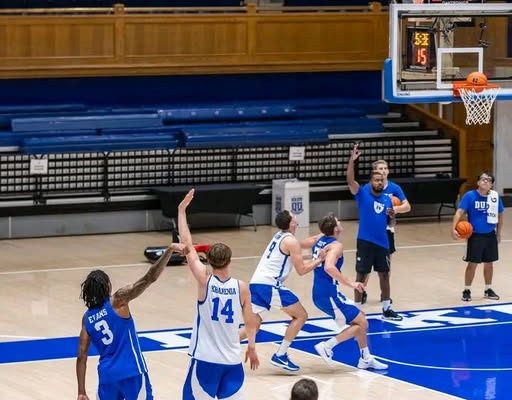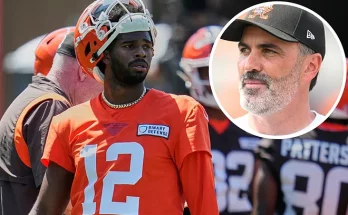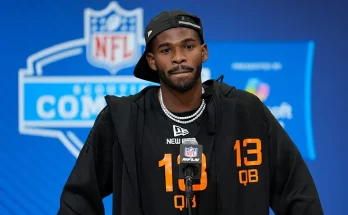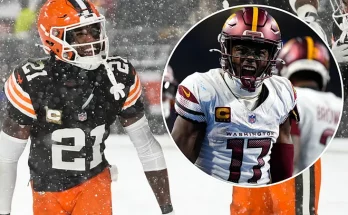Tensions are simmering beneath the surface in Durham, North Carolina, and it’s not just about the hot Southern summer. The upcoming Duke basketball season is already sparking a swirl of heated conversations and bitter divisions among fans, alumni, and analysts alike — and not a single game has been played yet. What was once a program united in its fierce loyalty to excellence and tradition now stands at a crossroads, teetering between unshakable hope and the looming threat of chaos. The Blue Devils’ 2025-26 roster is loaded with talent, but it’s that very wealth of promise, paired with complex internal dynamics, that threatens to ignite the most controversial season in Duke basketball history.
At the center of the storm is head coach Jon Scheyer, a former Duke point guard and Coach K disciple, who finds himself navigating the most pressure-packed season of his young coaching career. While Scheyer has already made headlines with recruiting victories and flashes of promise on the court, the demands that now rest on his shoulders are heavier than ever. This is no longer about adjusting to a post-Krzyzewski era — it’s about proving that Duke remains elite in the ways that matter most: dominance on the court, postseason runs, and unity among fans. But the truth is, that unity is fracturing fast.
The 2025-26 roster is one of the most talent-rich in all of college basketball. On paper, it could be a dream team. Headlined by a trio of likely lottery picks, a returning veteran nucleus, and a few highly-touted transfers, Duke’s lineup looks like a perfect blend of explosiveness and experience. But chemistry, roles, and expectations are proving to be combustible elements. The fanbase is already split into factions: some are celebrating the star-studded lineup and expecting nothing short of a national title, while others are raising red flags about how these personalities will coexist under pressure.
The most obvious lightning rod is five-star freshman phenom Zion Harmon Jr., a guard with off-the-charts talent and a reputation that precedes him — for better and worse. Harmon Jr. comes in as the highest-ranked recruit in the class and is expected to be a centerpiece of Scheyer’s offensive system. But his arrival has also stirred controversy, not only because of his flashy playing style and outspoken demeanor but also due to whispers about off-court issues that have followed him through his high school career. While he insists those concerns are behind him and he’s ready to mature under the Duke spotlight, fans remain polarized. Some view him as the next big thing, a future NBA All-Star with a killer instinct. Others worry he’ll be a distraction, or worse, a divisive force inside a locker room already stacked with alpha personalities.
Adding fuel to the fire is the surprise return of sophomore forward Jaylen Blakes, who briefly declared for the NBA Draft before withdrawing late in the process. Blakes was expected to be a leader after a solid freshman campaign, but his decision to test the professional waters, coupled with his return to a now-crowded lineup, has some questioning his role and mindset. Can he still lead when so many others are looking to take the reins? Can he accept a potential reduction in touches and minutes for the good of the team? Some insiders claim Blakes is on board with whatever helps Duke win, while others say there’s private tension over whether he’s being sidelined in favor of flashier new faces.
Even more intrigue comes in the form of international transfer Luka Vukovic, a Serbian stretch big man with a silky jumper and EuroLeague experience. His commitment to Duke shocked analysts and delighted fans who wanted more frontcourt firepower. But Vukovic’s style — finesse-oriented and often perimeter-heavy — doesn’t quite align with the traditional toughness that Duke’s big men have historically embraced. Critics are already lamenting that this could mark a departure from Duke’s blue-collar DNA. Supporters argue the game is evolving and Vukovic brings a modern skillset that makes Duke more dangerous. Either way, his presence is another reminder that this roster is unlike anything the program has assembled before — and it won’t satisfy everyone.
Then there’s the coaching staff itself. Scheyer, entering his fourth season, has now fully moved out of Mike Krzyzewski’s shadow. But with that freedom comes vulnerability. Last season’s early NCAA Tournament exit was disappointing, and while some chalked it up to growing pains, others began murmuring about whether Scheyer is the right man to lead such a storied program. The bar at Duke isn’t just high — it’s nearly unreachable. Anything short of a Final Four is often viewed as failure. The pressure cooker is intensifying, and Scheyer’s calm demeanor, once seen as a strength, is now being questioned. Can he assert himself among a roster full of future pros? Can he make tough decisions and live with the backlash when he inevitably benches a McDonald’s All-American or loses a game to an unranked opponent?
The early schedule does little to calm nerves. Duke opens the season with marquee matchups against top-five teams and plays in high-stakes tournaments that will test cohesion from day one. A few early stumbles and the whispers will become roars. Some boosters are reportedly already growing restless and voicing concerns behind closed doors, and message boards have turned into battlegrounds of opinion. A team this talented isn’t supposed to lose in November, and yet few would be surprised if they do — not because of talent deficits, but because the pressure is already squeezing the joy out of what should be a magical season.
Another point of friction is the evolving identity of the Duke program itself. Under Coach K, Duke was known not only for winning but for doing it with a blend of polish, class, and hard-nosed discipline. Whether fair or not, some feel that identity is slipping. Critics point to a growing trend of short-term players cycling in and out, the increasing reliance on one-and-done recruits, and what they see as a brand-first, team-second culture. The “brotherhood” mantra once evoked unbreakable bonds and sacrifice for the team — now, some argue, it feels like marketing spin. Are the current players truly playing for Duke, or merely using Duke as a stepping stone to the NBA?
Even among students and alumni, sentiment is turning complicated. Some celebrate the new era, embracing the glitz, NIL-driven headlines, and celebrity aura that now envelops the team. Others miss the grit and grind of the mid-2000s squads, when role players stuck around for four years and wins felt like earned battles, not predetermined coronations. What happens when expectations crash into reality? What happens if this team — despite all its talent and promise — ends the year with another Sweet Sixteen flameout or a humiliating loss to a lower seed?
The pressure extends beyond the hardwood. NIL dynamics are playing a larger role in Duke’s recruiting and roster management than ever before. High-profile deals for some incoming freshmen have stirred jealousy, internally and externally. While NIL is now a central part of college sports, the distribution of these deals — and the perception of favoritism — adds another layer of tension. Can a locker room truly stay united when some players are raking in six figures and others feel overshadowed or underappreciated?
Amidst all this controversy, one thing is certain: this Duke team will be one of the most scrutinized in college basketball. Every game, every substitution, every soundbite will be dissected. Media attention will be suffocating. If things go well, Duke could hoist another banner and silence the doubters. But if things go sideways, the fallout could be seismic — for the coaching staff, for the players, and for the identity of the program itself.
There’s an old saying in sports: pressure either bursts pipes or creates diamonds. For Duke basketball in 2025-26, the pressure is off the charts. What unfolds in Durham over the next few months could either mark the rebirth of a dynasty or the unraveling of a once-proud empire. One thing is for sure — controversy is already here, and the season hasn’t even tipped off. Whether it burns out or explodes remains to be seen.



